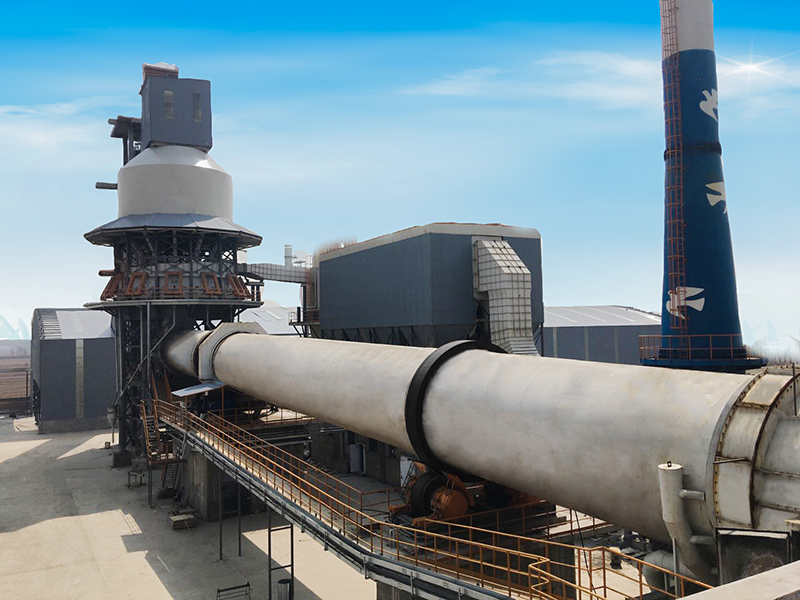Rotary kiln is composed of gas flow, fuel combustion, heat transfer and material movement. Rotary kiln is how to make the fuel can be fully burned, and the heat of fuel combustion can be effectively transferred to the material. After the material receives the heat, a series of physical and chemical changes occur, and finally the finished clinker is formed.

Classification of Rotary Kiln:
According to the appearance, it is divided into variable diameter rotary kiln and diameter rotary kiln; According to the purpose, it can be divided into cement rotary kiln, ceramsite sand rotary kiln, kaolin rotary kiln, lime rotary kiln, etc.; According to different energy supply effects It is divided into gas-fired rotary kiln, coal-fired rotary kiln, and mixed fuel rotary kiln.
(1) Variable diameter rotary kiln
Rotary kiln with varying front and back diameters. Generally, the diameter changes about 30cm before and after. Compared with the traditional diameter rotary kiln, it has the advantages of energy saving and high yield, but the variable diameter rotary kiln is difficult to process, and it is more difficult to process than the traditional diameter rotary kiln. More stringent equipment requirements.
(2) Diameter rotary kiln
It is a rotary kiln with the same front and back diameter. Our common type of rotary kiln was invented in 1883 by German Dietz. After years of evolution, the rotary kiln has become a universal equipment. It has better effect and higher output than traditional shaft kiln. The processing is simple, but it consumes more energy than the variable diameter rotary kiln.

Outstanding Advantages of Rotary Kiln:
(1) The technical performance and operation of the rotary kiln determine the quality, output and cost of the company's products to a large extent. "As long as the big kiln turns, there will be tens of thousands", the folk song is a vivid description of the importance of rotary kilns in production.
(2) In the building materials industry, in addition to calcination of cement clinker, rotary kilns are also used for calcination of clay, limestone and slag drying; in the production of refractory materials, rotary kilns are used to calcin raw materials to make their dimensions and strength stable. Increase and reprocess the shape.
(3) In the process of beneficiation, the lean iron ore is magnetized and roasted with a rotary kiln to change the original weak magnetism of the ore into a strong magnetism to facilitate magnetic separation.
(4) In the chemical industry, rotary kilns are used to produce soda, phosphate fertilizer, barium sulfide, etc. In the 1960s, LapPle and others in the United States invented a new process for producing phosphoric acid with a rotary kiln. This method has the advantages of low energy consumption, low electricity consumption, no need of sulfuric acid and the use of medium and low grade phosphate rock.
(5) The entire production process of cement is summarized as "two grindings and one firing", among which "one firing" is the process of burning raw materials prepared by grinding into clinker under the high temperature of the rotary kiln. Therefore, the rotary kiln is the main engine in cement production, commonly known as the "heart" of the cement factory.
(6) In terms of environmental protection, the developed countries in the world have used cement kilns to incinerate hazardous waste and garbage for more than 20 years. This not only reduces waste and makes it harmless, but also uses waste as fuel to save pulverized coal. To the recycling of waste.
Henan Zhengzhou Mining Machinery Co., Ltd., has been committed to the research of rotary kiln technology for many years, has accumulated a lot of experience in rotary kiln equipment, has mature production concepts, and a professional technical research and development team. We can create high-quality rotary kiln equipment for you. Warmly welcome People from all walks of life come to visit our factory!




















